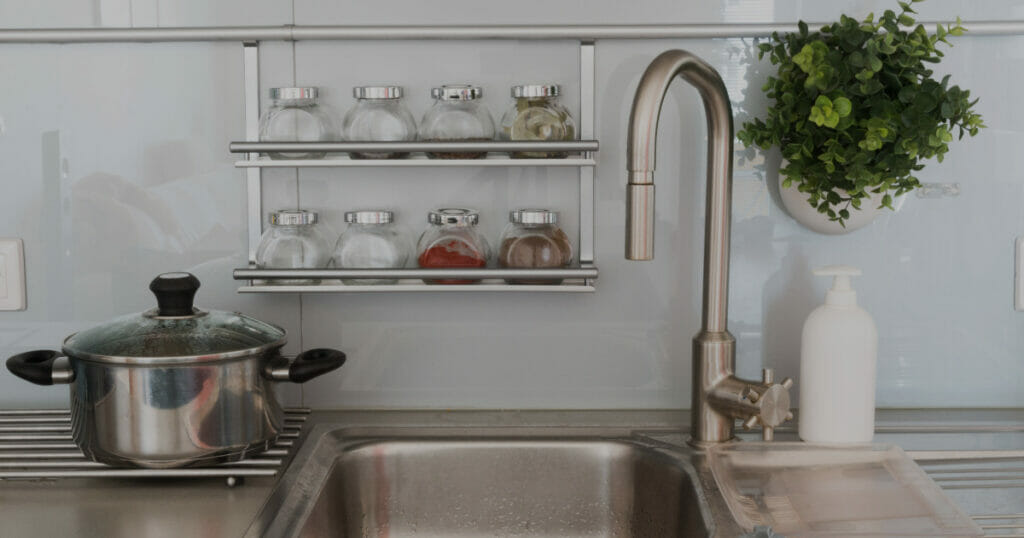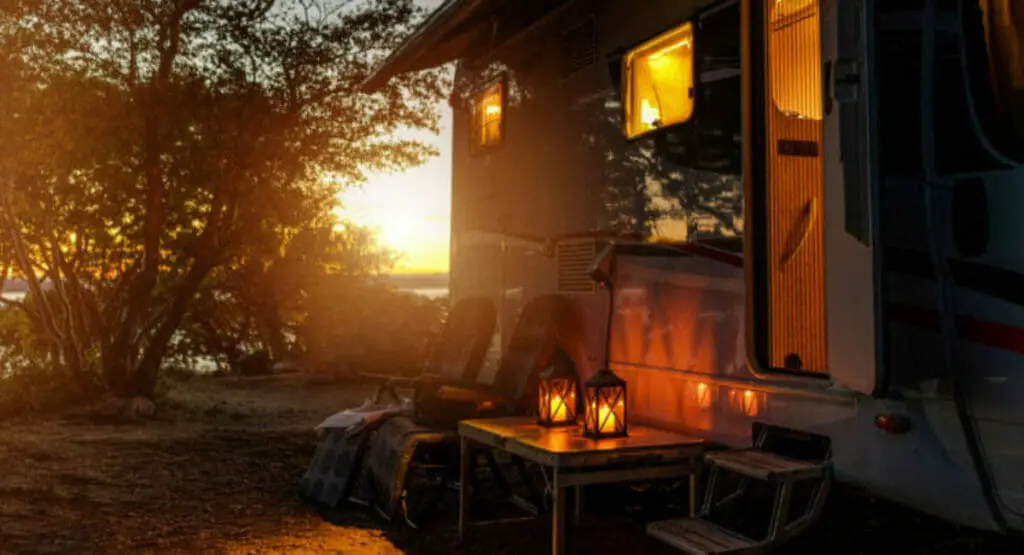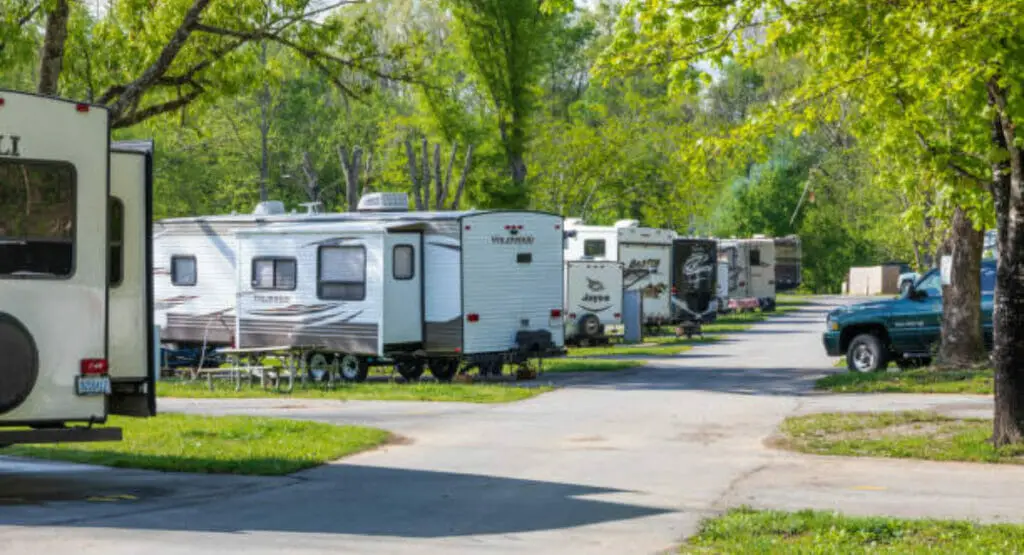Cleaning a freshwater tank in an RV is an important operation that should be done routinely to guarantee safe and clean drinking water. How To Clean Rv Fresh Water Tank The standard procedure involves draining the tank, cleaning it with a mild detergent, and then sanitizing it with a chlorine bleach solution. It is essential to adhere to the manufacturer’s instructions when cleaning, sanitizing, flushing, and refilling the tank with fresh water. It is also vital to frequently examine the tank for leaks or fractures. Overall, keeping the tank clean will ensure that no dangerous bacteria grow there and that the water is safe to drink.
The steps for cleaning a freshwater tank in an RV are as follows:
Step 1: Empty the tank
That is a phase in the process of emptying an RV’s fresh water tank. A small pump or hose can be used to drain any residual water when the water tank is situated in a place that is challenging to access. To ensure that all dirt and impurities are eliminated, it’s crucial to make sure the tank is entirely empty before cleaning. Additionally, if the water tank is difficult to empty, it’s crucial to inspect it for leaks or cracks and fix any problems before adding water.
Step 2: Clean the tank
To get rid of any filth, grime, or buildup that may have developed in the tank, mix a mild detergent with water and clean the interior of the tank with a soft-bristled brush. To ensure that all surfaces are fully cleaned, it is crucial to remember to wipe the sides, bottom, and any fittings or connections in the tank. Because they can ruin the tank or leave toxic residue, abrasive materials and strong chemicals should not be used. After cleaning, it’s a good idea to rinse the tank with clean water to get rid of any leftover detergent.
Step 3: Rinse the tank
After cleaning the tank, one of the tasks is to rinse it. It’s crucial to completely rinse the tank with a hose to get rid of any last bits of soap or dirt. By doing this, you can be confident that there are no leftovers, messes, or particles in the tank. The interior surfaces of the tank, including the sides, the bottom, and any fittings or connections, must be meticulously cleaned. It’s a good idea to repeat the rinse process as necessary to make sure the tank is completely clean and ready for sanitizing.
Step 4: Sanitize the tank
Sanitizing the tank’s water is crucial for ensuring that it is safe to drink because it helps get rid of any bacteria or other potentially dangerous microbes that might be there. By creating a solution out of water and chlorine bleach, the tank can be cleaned. Typically, 1/4 cup of bleach to 1 gallon of water is the suggested ratio. It’s crucial to fill the tank with the mixture and let it sit for at least 15 minutes so that the bleach has time to clean the tank. Then, to get rid of any leftover bleach solution, completely empty the tank once again and rinse it with new water. Being aware that various RVs have different types of tank materials and that some bleach could destroy them is vital. Before cleaning the tank, it’s wise to consult the manufacturer’s recommendations.
Step 5: Rinse the tank again
After cleaning, it’s crucial to thoroughly rinse the tank with fresh water to get rid of any leftover bleach solution. This is to ensure that no traces of bleach remain in the tank, which could potentially harm any living organisms or plants that may be present in the tank. Additionally, leaving bleach residue in the tank could cause a bad smell or taste in the water.
Step 6: Flush the system
An essential step in making sure the water lines have been properly sanitized is flushing the system. Running water through the faucets until you can smell the bleach will help to ensure that the water lines have been exposed to the bleach for a sufficient amount of time to kill any bacteria or other contaminants that may be present.
However, is important to be aware that after flushing the system, you should turn off all faucets and let the RV sit for at least 30 minutes with the bleach water inside the lines, and then flush the system again with fresh water until the smell of bleach is gone
Step 7: Refill the tank
That is a phase in the process of filling an RV’s fresh water tank. The tank should be filled with new water after being cleansed and disinfected. This step is crucial to making sure the water in the tank is fit for use and safe to drink. Check for leaks or cracks in the tank, as well as in the fittings and connections, before adding more fuel. By doing this, it will be possible to make sure that the tank is in excellent shape and that no problems exist that might lead to leaks or contamination in the future. Before adding more fuel to the tank, any cracks or leaks that are discovered should be patched. The water system may be cleansed, and the water can be tested for chlorine residue before use once the tank has been replenished and any leaks or cracks have been patched.
Step 8: Run water through the system
After filling the fresh water tank in an RV, one of the processes is to flow water through the system. After cleaning and sanitizing the tank, this step is crucial to flush out any leftover debris or chlorine that may still be in the water lines. By turning on each faucet, you can check that the water is pure and suitable for use in every part of the RV’s plumbing system. It’s also crucial to switch on the water pump, which will help the water circulate through the system and wash out any chlorine or debris that may still be present. If your RV doesn’t have a built-in water pump, you may still circulate water through the system by using a portable water pump. The water system has been cleansed and is ready for use when the water flows clearly.
Step 9: Test the water
After running water through the system in an RV, it’s crucial to analyze the water for chlorine residue. Making sure the water is safe to drink and has a suitable amount of chlorine to disinfect it will be made easier by measuring the chlorine residual in the water. The recommended residual chlorine concentration for safe drinking water is between 0.5 and 2.0 ppm (parts per million). Testing for chlorine residuals can be done in a variety of ways, including using test strips or a computerized tester. To make sure the water is still safe to use, it is a good idea to test it both before and after a set amount of time. It’s a good idea to add extra chlorine to the water and retest it if the chlorine residual is below the advised amount.
Conclusion
It’s essential to regularly clean the freshwater tank in an RV in order to provide clean and safe drinking water. Emptying the tank is typically the first step in the process, which is then followed by washing it with a mild detergent and sterilizing it with a solution of chlorine bleach. When sanitizing, flushing, and refilling the tank with fresh water, it’s critical to follow the manufacturer’s instructions. Furthermore, it’s essential to regularly inspect the tank for cracks or leaks and to address any issues before refilling the tank. You can make sure that the water in the tank is safe to drink and that the tank is in good operating order by following these instructions and routinely cleaning and maintaining the fresh water tank in your RV.



